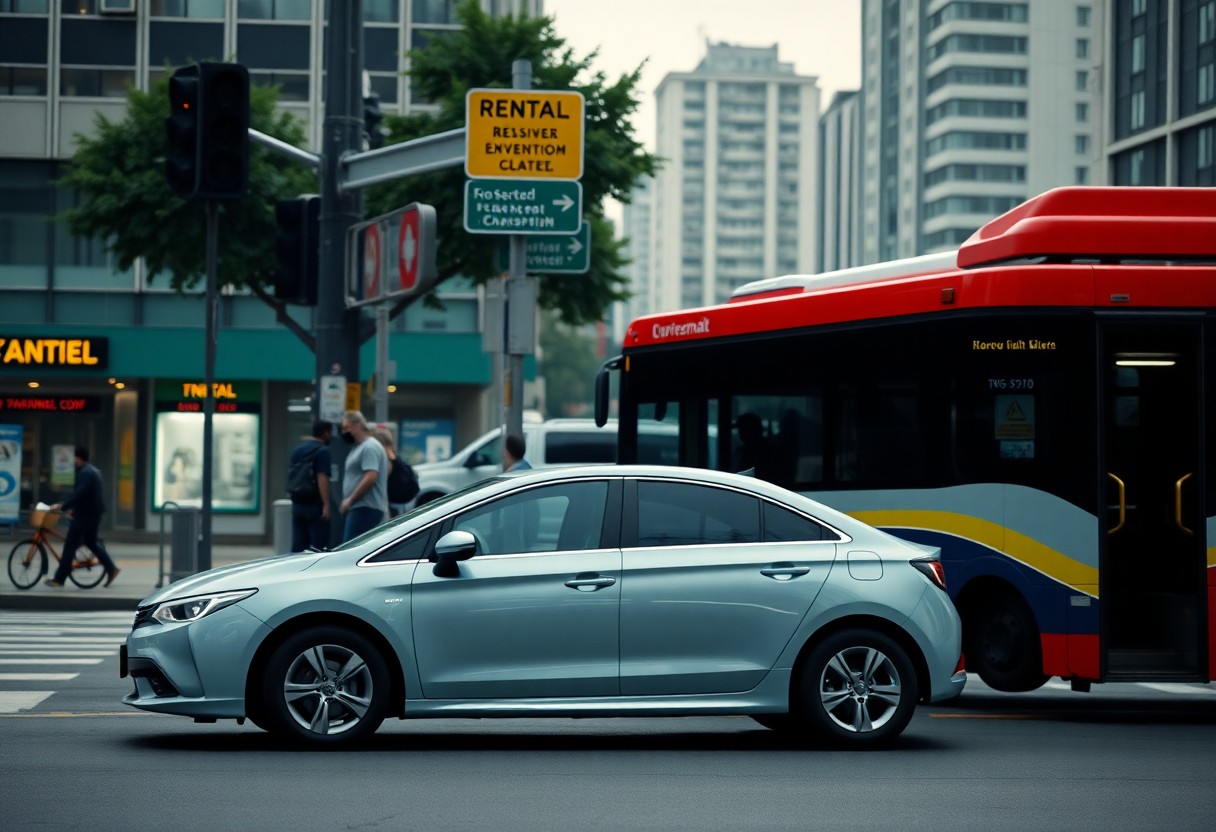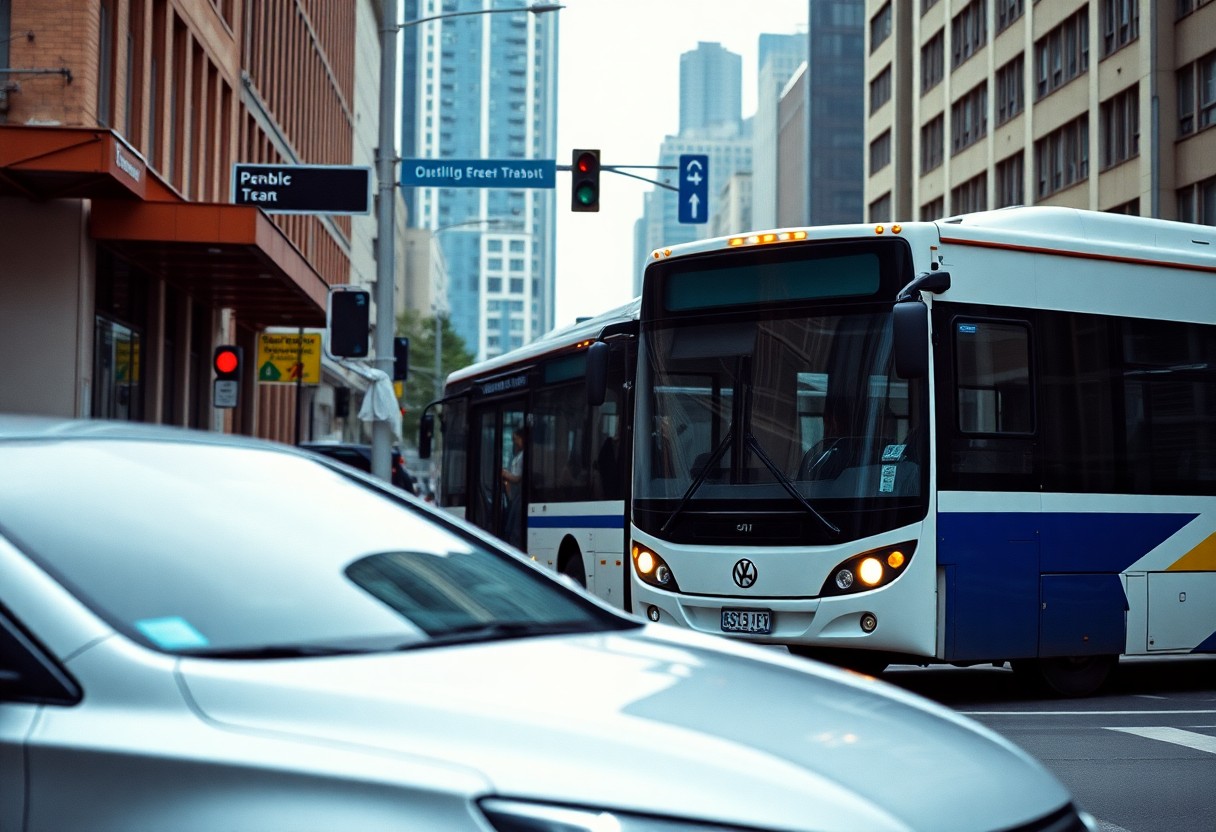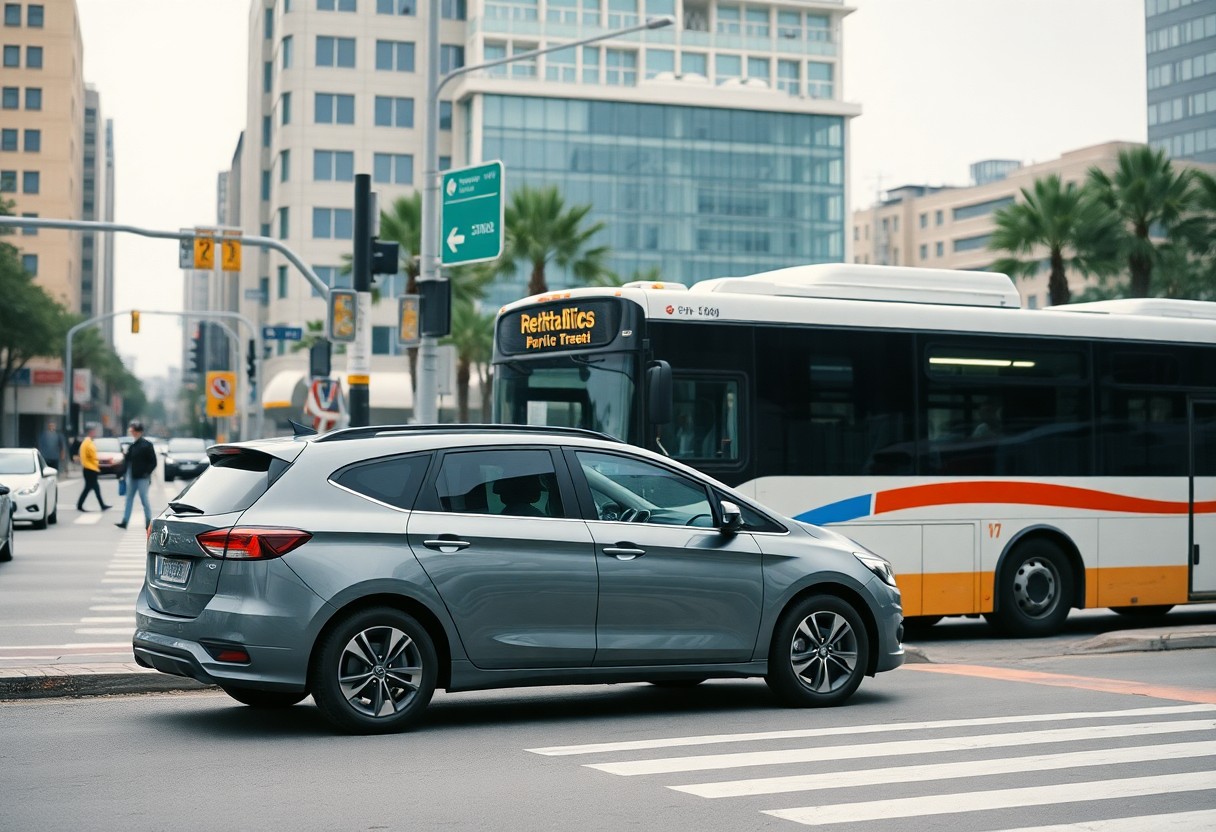As the cost of travel continues to escalate and personal time grows increasingly precious, selecting the ideal transportation method for your journey becomes paramount. This choice impacts not only your financial budget but also the overall quality of your travel experience. When planning your next adventure, you will need to weigh the freedom and flexibility of a rental car against the affordability and practicality of public transportation. Your ultimate choice will be influenced by a range of factors, including your destination, travel itinerary, and the number of people accompanying you. This comprehensive guide is designed to assist you in navigating critical considerations, from unexpected rental fees to public transport accessibility, ensuring you make a well-informed decision that meets your unique travel requirements.
Experience Unmatched Travel Freedom with a Rental Car
The independence associated with renting a car unlocks a plethora of travel opportunities. By opting for a rental vehicle, you gain full control over your travel itinerary and can visit locations that extend beyond the usual tourist attractions. Recent surveys reveal that 73% of travelers favor rental cars due to the unmatched flexibility they offer, making this option particularly appealing for those who prioritize autonomy during their travels. With a rental car, you can craft a personalized adventure, stopping wherever you choose and making spontaneous decisions that elevate your overall travel experience.
Evaluate the Advantages and Disadvantages of Rental Cars
With the acquisition of your rental vehicle, you will relish newfound freedoms, along with some inherent limitations. You can venture into off-the-beaten-path destinations and modify your travel schedule at your convenience, but it’s essential to remain cognizant of potential parking fees, which can vary from $25 to $45 daily in bustling urban settings. Additionally, navigating unfamiliar territories may present its own set of challenges. While your rental car serves as a personal haven, you will also need to consider fuel expenses and traffic management, which can sometimes result in stressful experiences. By understanding these dynamics, you can maximize the advantages of your rental journey.
Discover Hidden Costs and Unexpected Financial Benefits of Renting
While the freedom of a rental car comes with its price tag, it can also reveal surprising financial benefits. Although initial rental fees may appear steep, it’s important to recognize that traveling in a group can often lead to considerable savings compared to purchasing individual fares for public transportation. Recent statistics indicate that families of four or more typically save 15-20% on transportation costs when choosing a rental vehicle over public transit options, making it a savvy choice for larger groups eager to travel together.
Upon conducting a thorough financial analysis, additional factors come into play. Insurance premiums could add $15-$30 each day to your rental expenditures, but many credit card companies provide rental car protection services that can offset these costs. Moreover, the fuel efficiency of modern rental fleets, averaging around 30-35 MPG, can assist in keeping overall expenses manageable. The convenience of door-to-door travel not only conserves time but also enhances your ability to relish your vacation without the stress of navigating complex public transport systems.

Master Public Transportation for Effortless Travel Experiences
If you decide to depend on public transportation, the first step is to familiarize yourself with the system. Most major cities now offer user-friendly transit applications that help you with route planning, real-time arrival updates, and ticket purchases. Understanding the local transit network, including bus routes, subway lines, and transfer points, is essential for a seamless travel experience. Research shows that 55% of urban travelers save up to 30 minutes per trip by utilizing these transit applications, significantly improving their overall efficiency and enjoyment.
Become Proficient in Urban Public Transit for Effective Travel
Every city’s public transportation system possesses its own unique patterns and rhythms. Anticipate encountering peak hours, typically between 7-9 AM and 4-6 PM, when crowds are at their most intense. Consequently, it is prudent to incorporate alternative routes into your travel strategy, as delays are common during these times. Adding a buffer of 15-20 minutes for critical appointments will ensure timely arrivals and mitigate anxiety associated with unexpected delays.
Engage with the Social Landscape of Public Transit
Beyond the practical aspects, utilizing public transportation provides a unique social experience. You’ll share the space with both locals and fellow travelers, allowing you to indulge in the authentic essence of the city. While this can occasionally lead to uncomfortable situations, it also offers rich cultural insights. Studies indicate that regular public transit users enhance their social skills as they navigate diverse social scenarios, making this a valuable aspect of urban exploration.
At times, you may navigate through varied social situations on public transport. From the vibrant energy of rush hour to the quiet solitude of late-night rides, each moment presents its distinct atmosphere. Safety becomes paramount during off-peak hours, so it’s crucial to remain vigilant and choose well-lit, populated areas for waiting. Most transit systems now feature 24/7 security monitoring and emergency communication systems to bolster your safety while traveling.
Assess the Financial Implications of Your Transportation Decisions
When comparing your travel options, budgeting is a vital factor in choosing between rental cars and public transport. Your transportation costs can fluctuate significantly depending on your destination, trip duration, and the number of travelers in your party. While rental cars provide enhanced flexibility, they also entail hidden costs such as insurance, fuel, and parking fees. Conversely, while public transport may initially appear cheaper, the cumulative expenses of frequent daily rides can escalate quickly.
Understanding the Comprehensive Costs Associated with Driving
A detailed financial evaluation of rental cars uncovers expenses that stretch beyond the daily rental rate. You should anticipate $30-$50 daily for insurance, average fuel expenses of – per tank, and potential parking charges that can skyrocket to $50 per day in major metropolitan areas. Consequently, your total daily travel costs could easily reach $100-$200, making this option more appealing when traveling in a group, where costs can be shared among multiple travelers.
Analyzing the Cost Structure of Public Transit Tickets
Initially, public transportation may seem like the more budget-friendly option. In cities like New York, where average metro cards cost $34 for unlimited weekly rides, significant savings can be realized compared to rental car expenses. Additionally, you will sidestep supplementary costs such as parking and fuel, making public transit particularly advantageous for solo travelers aiming to minimize expenditures.
Cost analyses reveal that weekly public transport passes in many large urban areas range from $25-$40, providing unlimited rides. However, for families or groups of four or more, the total expense of multiple transit passes may surpass the cost of renting a car, especially when planning extensive daily travel or visits to areas with limited public transportation options.

Optimize Your Time Management for Successful Travel
As you weigh the options between rental cars and public transport, prioritizing your schedule is vital. A rental car facilitates direct, point-to-point travel, potentially conserving up to 40% of your travel time compared to public transportation. Your time is invaluable – while public transport might seem like a cost-effective choice, it’s essential to factor in the hours lost waiting, transferring, and walking to and from stations, which can drastically diminish your overall travel efficiency.
Experience the Flexibility of Unplanned Travel Adjustments
When considering time flexibility, a rental car grants you total autonomy over your departure and arrival times. You are liberated from the constraints of fixed transit schedules, allowing for spontaneous detours or last-minute changes to your itinerary. This level of freedom is priceless when unexpected circumstances arise or when you stumble upon hidden treasures along your journey, enabling you to fully embrace the adventure.
Navigate the Challenges of Public Transport Timetables
One of the primary hurdles associated with public transportation is adhering to rigid schedules. Studies reveal that 23% of urban buses fail to run on time during peak hours, which can disrupt your plans significantly. Your journey often involves multiple connections, and a delay in one service can trigger a cascading effect, throwing your entire day off course.
To effectively maneuver public transportation, it’s wise to incorporate extra buffer time. Transport experts suggest adding 15-20 minutes to your estimated travel time for each connection. During rush hours or special events, consider doubling these buffer times, as they can have a substantial impact on your available time for activities.
Understand the Environmental Consequences of Your Transportation Choices
When evaluating your transportation options, it is essential to consider the environmental ramifications of your decisions. A single-occupancy rental car emits approximately 404 grams of CO2 per mile, while public transportation can reduce emissions by up to 45% per passenger. The choice between renting a car and utilizing public transit creates a significant environmental footprint that deserves your consideration.
Understand Your Carbon Footprint as a Traveler
Each mile you travel directly contributes to climate change and environmental degradation. A fully-loaded bus can replace the need for 50 cars on the road, resulting in a marked reduction in carbon emissions. Your journey in a rental car can generate 4-5 times more CO2 than a comparable trip via bus or train, although selecting electric or hybrid rental options can significantly mitigate this impact.
Explore Sustainable Transportation Alternatives
Upon reaching your destination, you’ll discover a variety of environmentally friendly transportation options. Electric car rentals can reduce your carbon footprint by up to 50% in comparison to traditional vehicles. Moreover, many cities now offer hybrid buses and electric trams, making public transport an increasingly sustainable choice for eco-conscious travelers.
Consequently, your environmental impact can vary significantly based on your transportation decisions. Consider adopting a mixed-method approach – rent an electric or hybrid vehicle for longer distances while utilizing public transit in densely populated areas. Numerous rental agencies now provide green vehicle options, enabling you to maintain your mobility while minimizing your ecological footprint.

Achieve Ultimate Comfort During Your Travels
In contrast to public transportation, rental cars grant you full control over your comfort preferences. You can effortlessly adjust the climate, seating configurations, and audio settings to match your personal tastes, crafting an optimal travel environment. This degree of customization becomes especially valuable during extreme weather conditions or lengthy journeys, where overall comfort significantly enhances your travel experience.
Relish the Advantage of Personal Space in Rental Vehicles
One of the most notable benefits of renting a car is the assured personal space it provides. You won’t need to grapple with crowded buses or trains, where personal space often shrinks to less than 4 square feet during peak travel times. Your rental car becomes a private oasis, allowing you to maintain complete control over your travel environment and who shares it with you.
Recognizing the Varied Comfort Levels of Public Transportation
Comfort levels on public transit can fluctuate significantly due to factors beyond your control. During peak hours, you may find yourself squeezed in with 150-200 passengers in a single subway car, drastically reducing your comfort. The experience often involves standing for extended periods, particularly during the average 38-minute commute in major cities.
In a typical rush-hour scenario on public transport, noise levels can peak at around 80-90 decibels, comparable to the sound of heavy city traffic. These conditions, compounded by unpredictable delays and service interruptions, can render your journey less enjoyable and more challenging, especially when traveling with luggage or in a group.
Make an Informed Decision on the Best Transportation Option for Your Travel Needs
Ultimately, your choice between renting a car and utilizing public transport should reflect your specific travel needs and priorities. If flexibility and comfort are paramount, particularly when traveling with family or friends, a rental car typically offers the greatest value, even when considering the higher upfront costs. Conversely, public transportation can be an excellent choice for budget-conscious solo travelers who prefer established routes in urban environments. It’s crucial to assess factors such as your destination, group size, planned activities, and budget. By carefully weighing these elements against your personal preferences, you can determine the transportation option that aligns best with your travel objectives.
The Article: Renting a Car vs. Public Transport: Which is Best for Your Trip? appeared first on https://rentacar24.org/
The Article Renting a Car vs. Public Transport: Choose the Best Option for You Was Found On https://limitsofstrategy.com
The Article Renting a Car vs. Public Transport: Find Your Best Travel Option First Appeared ON
: https://ad4sc.com




This is such a timely topic! I recently faced this exact dilemma while planning a trip to the Pacific Northwest. On one hand, the flexibility of a rental car was tempting; the idea of wandering off to explore hidden gems along the coastline was incredibly appealing. However, I couldn’t ignore the rising costs and the responsibilities that come with having a rental—like insurance, refuel requirements, and that inevitable search for parking in busier areas.
I totally understand the tug-of-war between the flexibility of a rental car and the hassle that comes with it. Planning a trip to the Pacific Northwest seems like the perfect backdrop for spontaneous adventures. There’s something magical about being able to pull off the road and explore those little coves or trails that aren’t on the usual tourist maps.
Ah, the age-old battle of car rental vs. public transport — it’s like choosing between pizza and sushi for dinner. Both are delightful but come with their unique set of adventures (and misadventures).
You’ve touched on such an essential aspect of travel that often goes unnoticed until we’re faced with the decision ourselves. The tension between the freedom a rental car offers and the budget-friendly allure of public transportation is something I’ve grappled with on multiple trips, and it often turns into a mini adventure of its own.
It really is interesting how the choice between a rental car and public transportation can shape the experience of a trip. I’ve found that these decisions often lead to some of the most memorable moments. Just last year, I was in a city where the public transit was surprisingly seamless. I ended up chatting with a local on the bus who shared some hidden gems that I would have never found otherwise. It was way more enriching than just driving past.